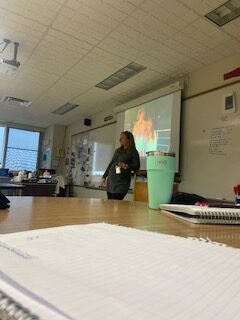How to be Eco-Friendly at School
Schools are a major source of paper, plastic, energy, and most importantly, people. A lot of people create a lot of unnecessary waste. There are so many things that you as an individual can do to reduce the amount of waste that schools produce. Below are some tips on how you can help make a difference.
Use less paper
Students and teachers use countless sheets of paper daily that can easily be replaced. Pennridge provides its students with touch screen laptops and stylists. Instead of printing documents, write directly on them using the stylist provided. OneNote is a great tool to use because it allows you to upload powerpoints, documents, pdfs, and so much more and allows you to directly write on them. If you don’t want to use electronics, check out the Rocket Book which is an inexpensive, reusable notebook.
Use reusable items instead of plastic items
Our oceans are littered with plastic (around eight million pieces each day) found in water bottles, sandwich bags, containers, straws, and many other items. Instead of buying large cases of plastic water bottles, buy a reusable water bottle. The Environmental Club at Pennridge run by Mrs. Reese worked on an initiative to reduce plastic water bottle usage by having water bottle filling stations installed all throughout the school. Mrs. Reese explains how she sees “a huge difference in the number of kids carrying reusable water bottles versus six years ago where it was close to none.” Another switch that can be made is using plastic bags for your snacks instead of reusable containers. Instead of using a grocery bag or brown paper bag, use a reusable lunch bag. Get a set of metal straws that can simply be rinsed after each use.
Be aware of electricity usage
You have probably heard it a million times, but when you leave a room turn the lights off. If you aren’t charging your phone or laptop, unplug that cable. Use natural sunlight as much as possible. According to Elemental Green, natural light helps you focus and reduces grogginess. In classrooms, open the blinds and keep the lights off as much as possible.
DIY supplies and projects
One of the biggest ways to motivate the new generation to care for the environment is to teach them from an early age. Elementary school students should learn to care for plants by doing projects where they raise their own plants. Making DIY (do-it-yourself) school supplies is also another activity that anyone can participate in. Some DIY projects are turning dried out markers into watercolor paint, reusing assorted water bottle caps to make art, making pouches out of empty snack bags, and so many more.
One by one, we can all make a difference that can save the world. A student at Pennridge, Emily Bolger, explained how she will try to “pay attention to [her] electricity usage” and “make a compost bin” in hopes to be more eco-friendly. She continued to explain how she carpools daily, drives a hybrid car, and constantly recycles. I hope you get an idea of how you can make a change in your life! Leave a comment below on which tip you decide to try out and how!
Shaniya Gohel is a senior at Pennridge. She enjoys baking, cooking, reading, art, spending time outdoors, and spending time with friends and family. Shaniya...







